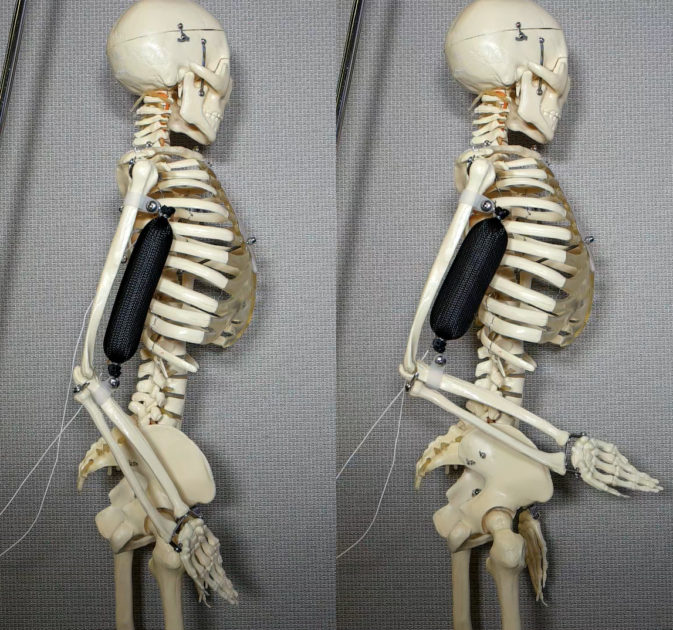
Big developments in prosthesis-hacking, bridge-building, plane-lightening, muscle-making, and a slew of other miracles, all this week in 3D printing.
That’s Nice
We love telling you about amazing girls doing cool stuff, and this girl, well, she is our hero this week. As ZDNet reported, little Hailey Dawson was born without all her fingers. Her options for prostheses were limited to ultra-expensive models that her family couldn’t afford. So, students and faculty at the University of Nevada Las Vegas stepped in to develop 3D-printed hands for Hailey. And now, thanks to a robotic hand they developed, she’s throwing out the first pitches at baseball games all over the country, including Game Four of the World Series. Keep your eyes on Hailey — a future as the first prosthesis-packing pro pitcher might just be ahead.

This girl!
Machines Learn to Build Bridges
It was a while ago when we first heard about MX3D’s plan to print a steel bridge designed by Joris Laarman. Today, we’re almost there. But, it took some redesigns (Amsterdam’s a pretty old place, and this is a brand-new kind of bridge) plus some amazing machine learning algorithms to get the bridge to print in a structurally sound way. Learn more in FastCoDesign’s feature on the span’s development and what it means for future projects. As for us, we can’t wait to cross that bridge… when we come to it.
Feeling Lighter Than Air
Airplanes are heavy, and each additional pound plays out in the extraordinary amount of extremely expensive fuel needed to fly them. But don’t worry, the aeronautics industry is not trying to recoup all that money via exorbitant baggage fees. As the New Scientist reported, they’re also working on using nanoparticles to make 3D printed aluminum strong enough to hold up to welding. That would make it possible to replace thousands of metal rivets and fasteners with strong, lightweight 3D printed aluminum products. Which could means thousands of gallons of fuel saved, possibly even saving the earth from climate change’s worst-case-scenario effects. A girl can dream.
Getting Ripped, Layer by Layer
We talk a lot about the magic of medical 3D printing applications. And so do a lot of other publications. All of those (amazing, hope-inducing, inspiring) applications mimic, in some way, the human form, to improve the health of humans. But what about robots? It stands to reason this would not be far behind: A group of researchers at Columbia University has created an actuator that imitates muscle matter, which expands and contracts to move robotic limbs. This might have applications in prosthetics, but for right now, it’s robots-only. When the robots come for us, they will be even more like us than we ever imagined!

Right now, they’re helping this guy bulk up. (photo via Columbia University)


